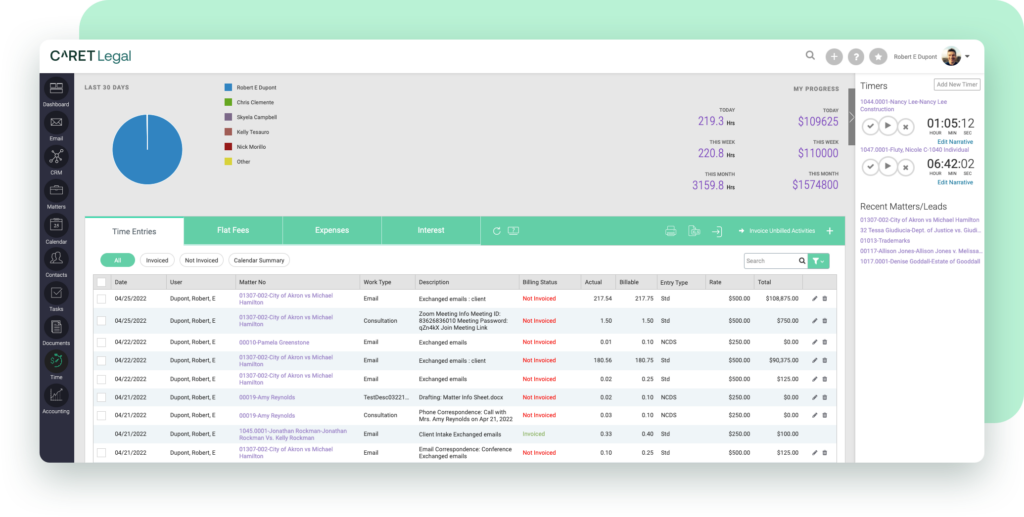Understanding the most common reasons behind rejected invoices, along with the errors which lead to them, is the first step in refining your firm’s invoicing practices for a smoother billing process
Rejected invoices are the last thing any law firm needs – they delay payments, strain client relationships, and increase administrative burdens. When firms face these rejections, it’s usually due to preventable errors or misalignments with client expectations.
Understanding the most common reasons behind rejected invoices, along with the errors which lead to them, is the first step in refining your firm’s invoicing practices for a smoother billing process. Here are the top 10 reasons legal invoices get rejected and solutions to overcome them.
1. Failure to Adhere to Client Billing Guidelines
Overlooking or misinterpreting client-specific billing instructions, such as hourly rate caps or designated non-billable activities, is a frequent cause of invoice rejection. This often stems from inconsistent tracking of client preferences or a failure to update client guidelines regularly.
Solution: Centralize client billing rules in a single, accessible location and update them frequently. Tailored legal practice management software helps in achieving this if your firm doesn’t already have a suitable platform in place.
2. Missing or Incorrect Billing Codes
Mixing up billing codes or omitting LEDES codes altogether can throw a wrench in the invoicing process. These mistakes are often a result of outdated manual entry processes or not fully understanding the nuances of each client’s expectations.
Solution: Consider a legal billing software with automated code mapping that eliminates errors and maintains compliance.
3. Non-Compliance with LEDES or Other Billing Formats
When invoices miss the mark on required formats like LEDES standards, they’re often sent back. This typically happens when firms rely on antiquated tools or don’t pay close enough attention to the formatting rules required for compliance.
Solution: Modernize your billing tools with tailored software that supports all LEDES and other client-imposed formats.
4. Incomplete Time Entries
Invoices with vague or missing task descriptions are often questioned or rejected. Clients want to know what they’re paying for, and rightfully so. This issue frequently results from rushed invoice preparation or poor timekeeping habits.
Solution: Standardize time entry processes and mandate detailed descriptions for all billable activities. Using an integrated system helps achieve consistency and clarity.

5. Duplicate Charges
Charging for the same task or expense multiple times not only leads to rejections, but also frustrates clients and can severely damage firm reputation. A lack of internal validation process is often the culprit behind duplicate charging.
Solution: Use automated billing systems that can flag duplicate entries before invoices are submitted, preventing rejection and maintaining client trust.
6. Billing for Unauthorized Work
When tasks or expenses slip onto an invoice without the green light from the client, invoices become disputed and client trust falters. These missteps usually trace back to unclear communication or lack of clarity in engagement terms.
Solution: Track authorizations in your billing software, including client-approved caps or limits, to avoid misunderstandings.
7. Mathematical Errors
Basic mathematical errors are bound to happen when relying on manual calculations. Simple errors in totals or hourly rates are a common reason for invoice rejection, and a lack of automated billing tools only accentuates this problem.
Solution: Use an integrated practice management system that automates calculations to reduce human error and streamline invoicing.
8. Missing Supporting Documentation
Missing receipts, time logs, or other supporting evidence can quickly land your invoices in the rejection pile. These gaps often happen when records are scattered or invoice submissions are sent incomplete.
Solution: Attach supporting documents directly within your billing software to create a complete and supported invoice.
9. Incorrect or Incomplete Client Information
Probably the most simple of reasons an invoice might be rejected, but not any less critical. Inaccuracies or mixing up of client names, addresses, and matter IDs are likely to result in invoices bouncing back – not to mention it doesn’t exactly reflect well on your firm’s professionalism.
Solution: Keep client databases up-to-date and verify all information before invoice submission.
10. Late Submissions
Missing the billing deadline on an invoice can cause payment delays, cash flow issues, and put a strain on client relationships. Most often, it’s due to disordered workflows or simply not keeping track of deadlines.
Solution: Set reminders to track and meet billing deadlines. Legal practice management software can assist in maintaining a consistent schedule.
Avoid Rejection At All Costs
Tackling common invoice rejection issues with the right tools makes all the difference. CARET Legal equips your firm to handle these challenges head-on, simplifying your billing process and strengthening client relationships. Ready to see how it works in action? Book a demo today and leave rejected invoices in the past.
